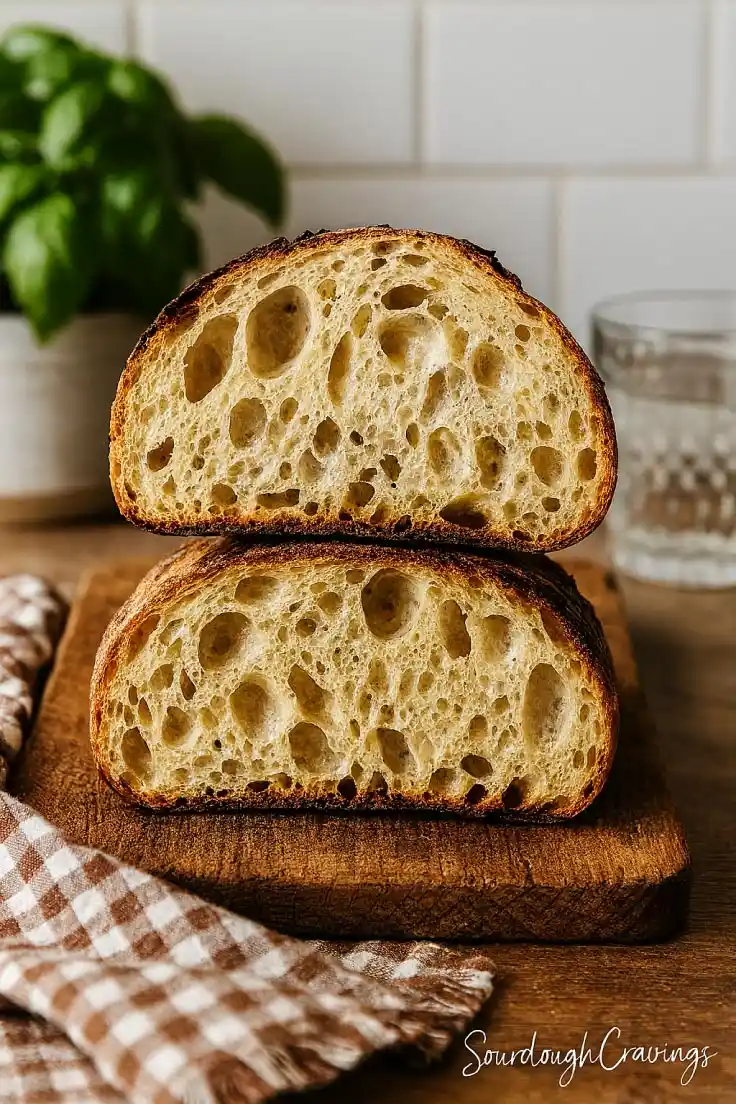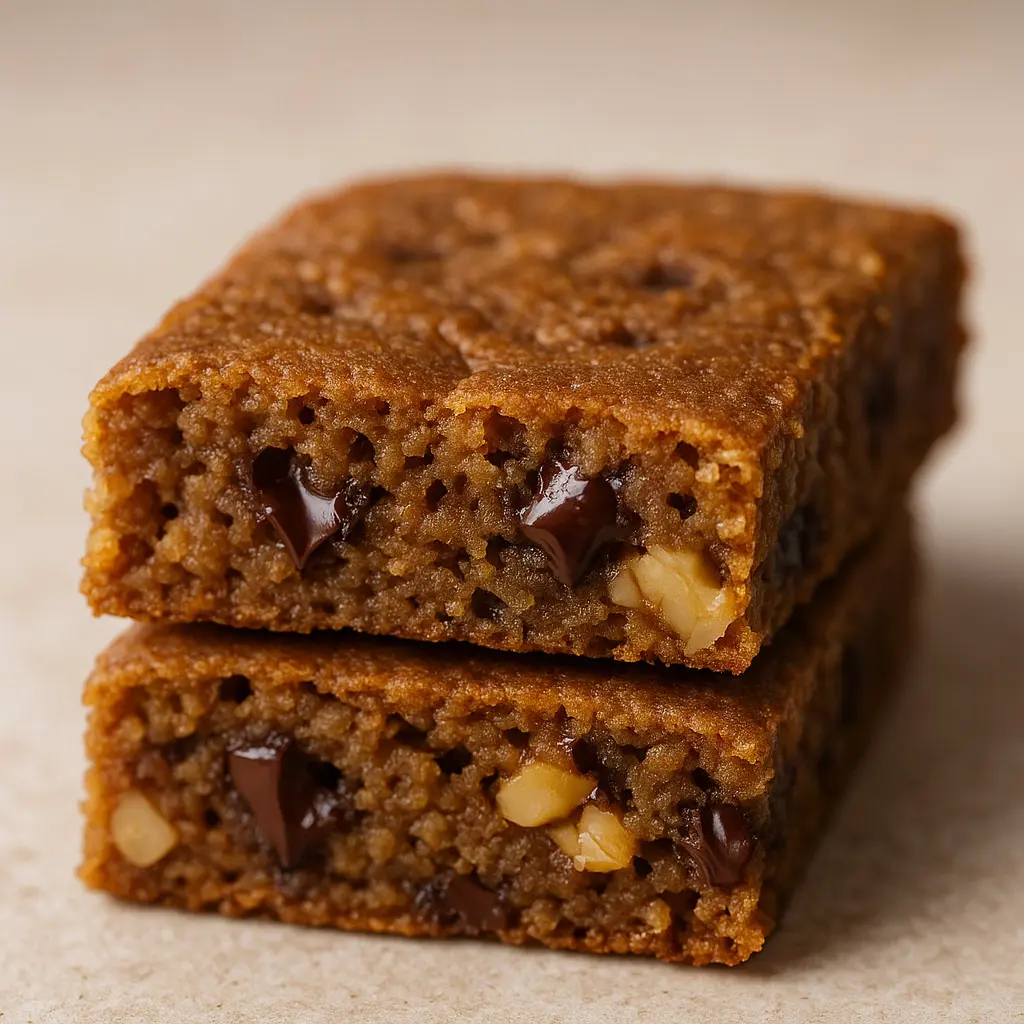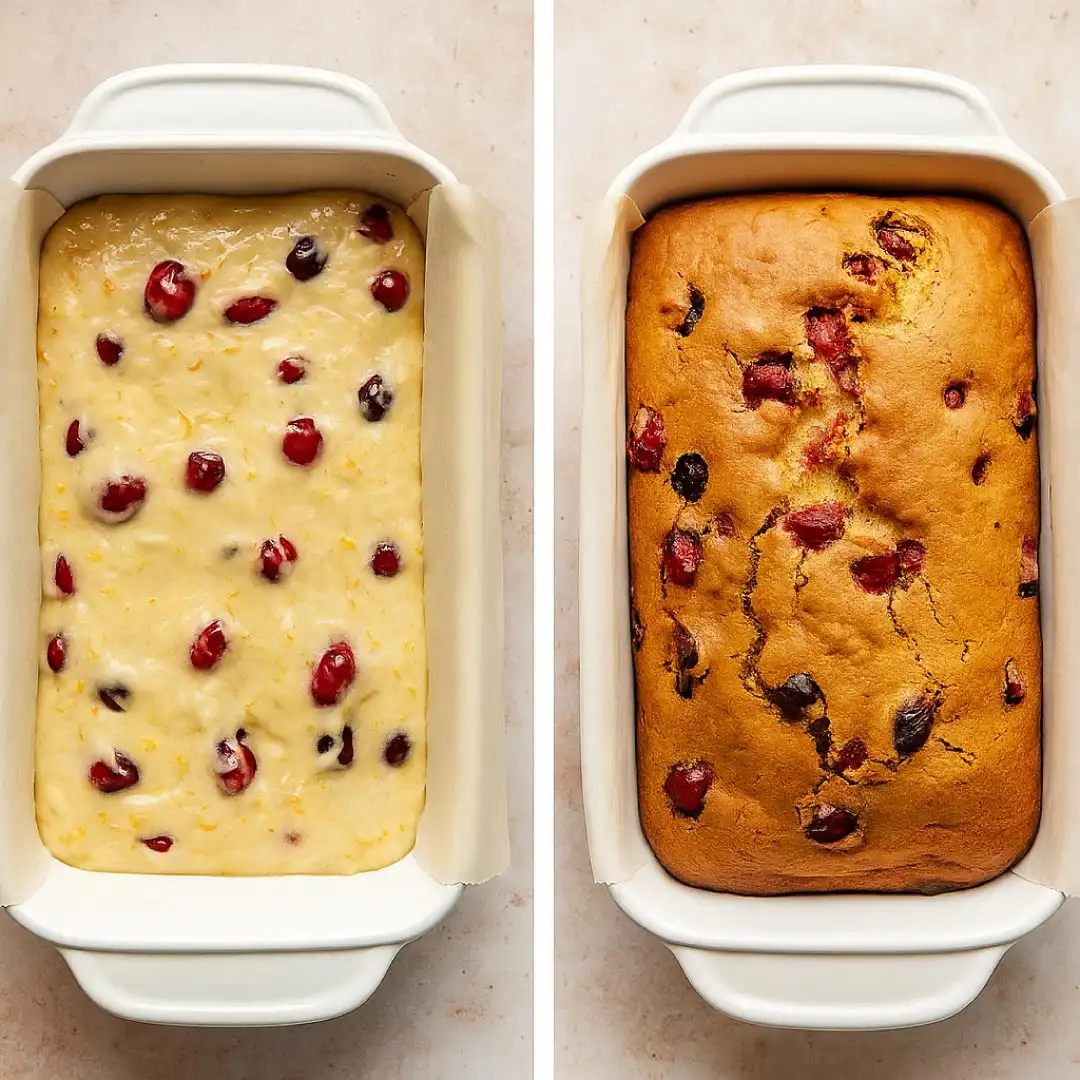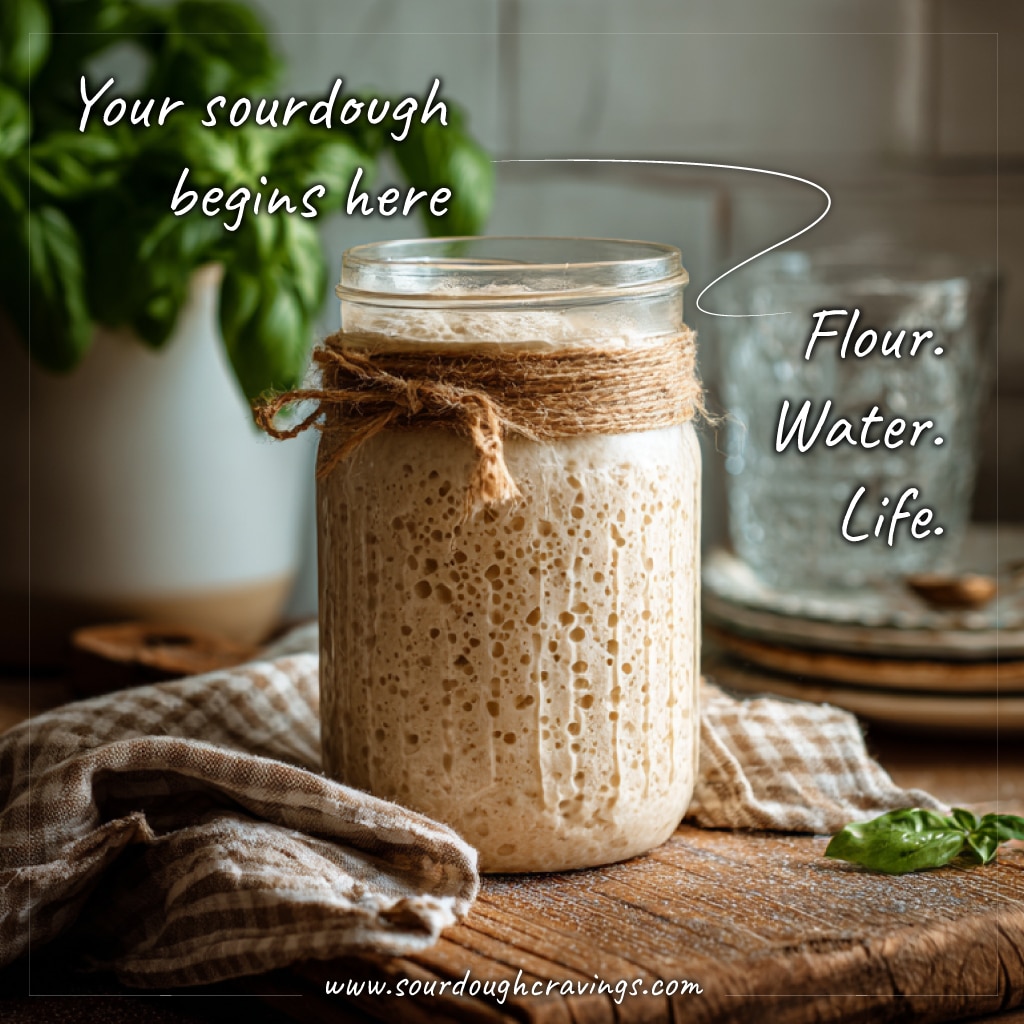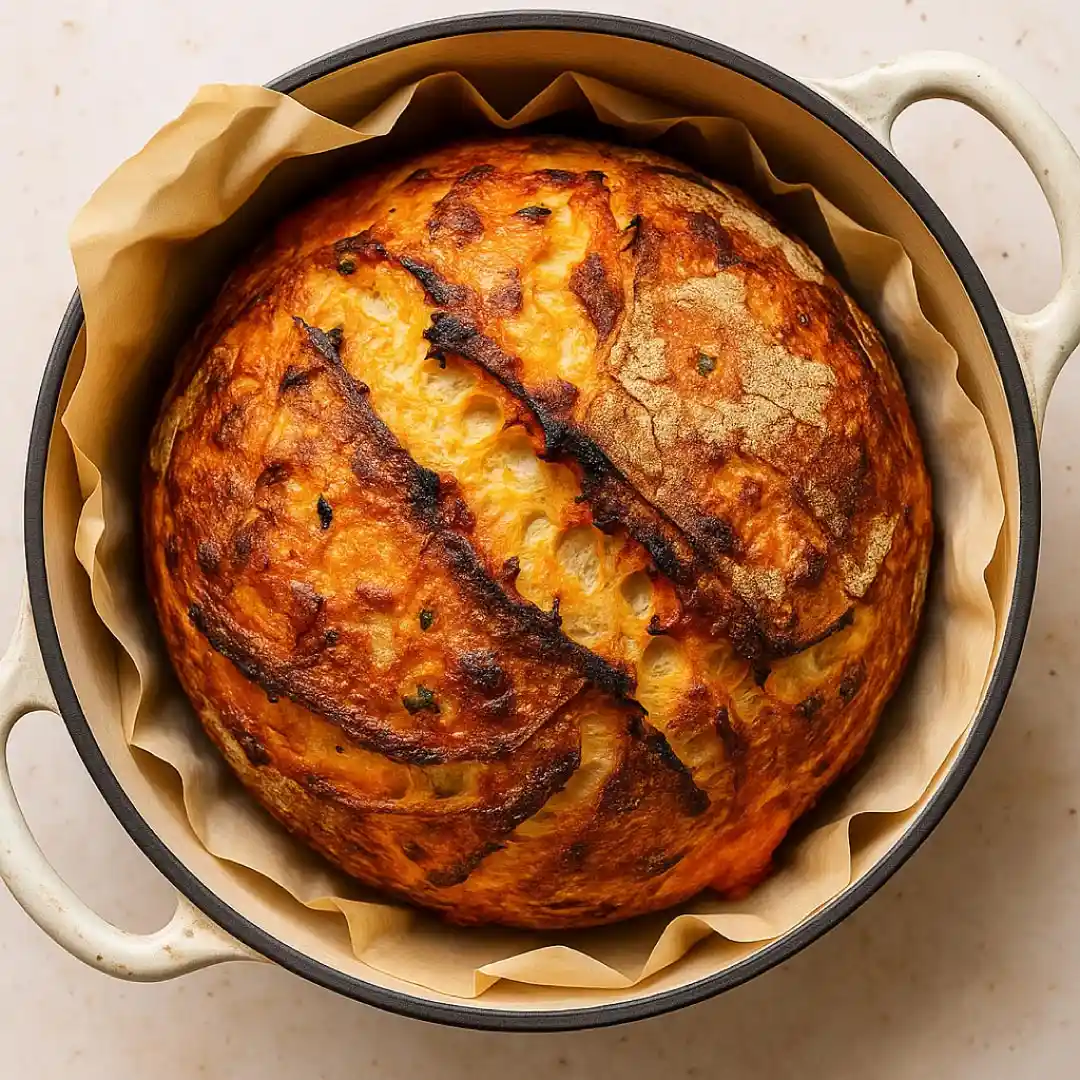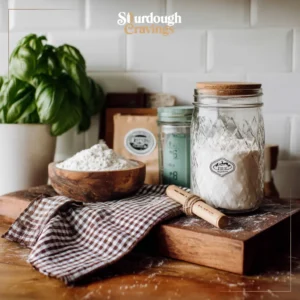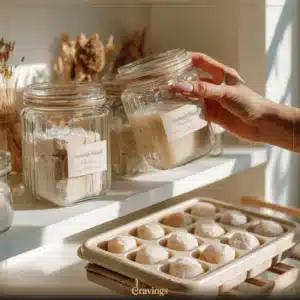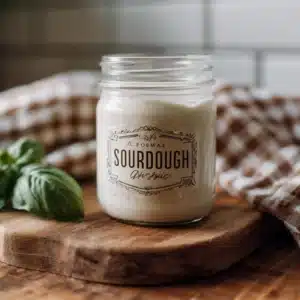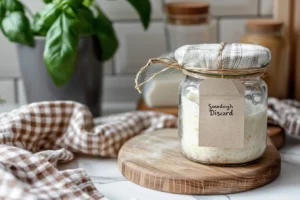How much sourdough discard to keep — that’s a question every baker eventually asks.
If you’ve ever started a sourdough starter, you’ve probably found yourself staring at the jar and wondering, “Am I keeping too much? Should I throw some of this out?”
That’s one of the most common questions every baker eventually asks — how much sourdough discard should you actually keep?
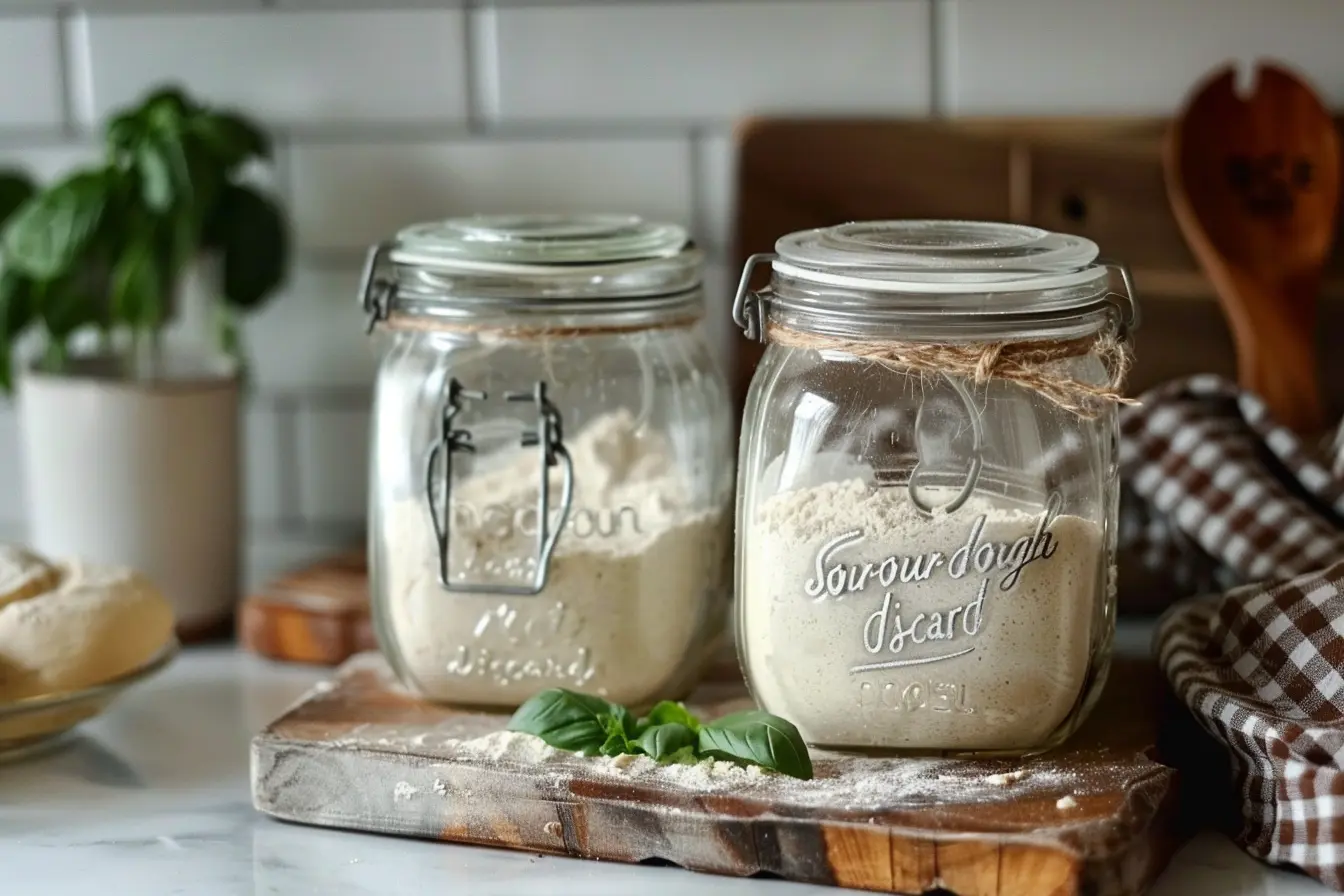
Here’s the truth: you don’t need to keep all of it. In fact, keeping too much discard can make feeding your starter wasteful, confusing, and expensive. The key is learning how to balance what you save, what you use, and what you let go.
In this guide, we’ll talk about exactly how much discard to keep, when it’s time to toss some out, and how to do it in a way that keeps your starter healthy and your kitchen efficient.
Once you understand how discard fits into your routine, you’ll never feel guilty about throwing some away again — or about saving just the right amount for your next bake.
Before we dive in, if you’re new to working with sourdough discard, check out the foundational post:
Sourdough Discard 101 – The Ultimate No-Waste Guide.
It’s the perfect place to start understanding how discard behaves and how to make the most of it.
Table of Contents
Why You Need to Throw Some Sourdough Away (The Real Reason Behind the Discard)
If you’re new to sourdough, that first instruction to “throw some out” can feel strange — almost wrong. You’ve been feeding this little jar of bubbling life every day, and now you’re supposed to get rid of part of it? It feels wasteful, especially when you’re using good flour. But the truth is, there’s a very good reason why discard exists.
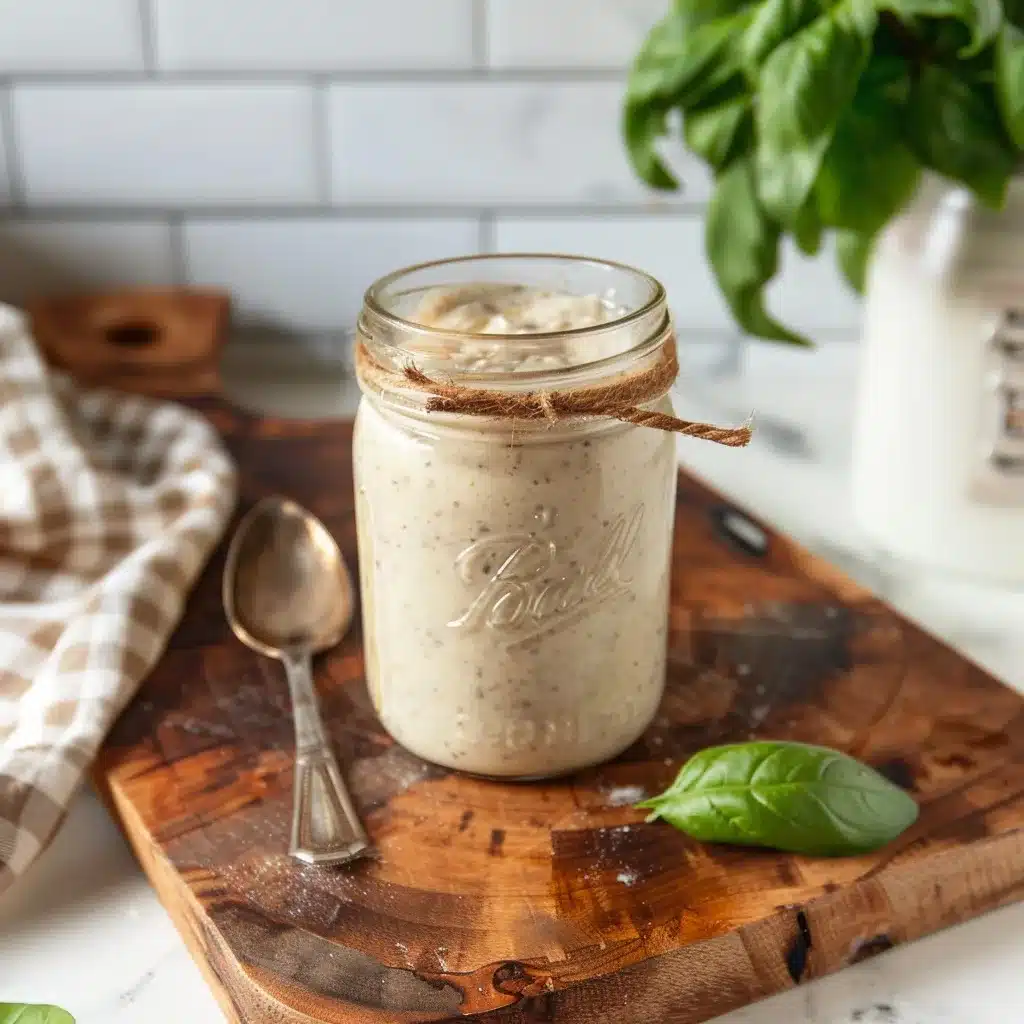
Every time you feed your starter, you’re giving it fresh food — new flour and water for the wild yeast and bacteria to feed on. If you just kept adding more without removing any, your starter would multiply quickly, and within a week or two, you’d have a giant bucket of starter eating through your flour supply. Worse, the microbial balance inside that jar would start to shift in the wrong direction.
Discarding is what keeps your starter healthy and your feedings realistic. It keeps the acidity, texture, and microbial population balanced. Without removing some first, your starter would become sluggish, overly sour, or even unstable — which means it won’t rise dough as predictably.
So, when you scoop out a portion before feeding, you’re not wasting anything — you’re making space for growth. You’re resetting the balance so your starter can stay strong and active. Think of it as pruning a plant: you trim a little to help it thrive.
The key isn’t whether you should discard (you absolutely should) — it’s knowing how much sourdough discard to keep and how much to let go. That’s what turns this daily task into a sustainable habit instead of a wasteful one.
If you’re not sure what to do with the part you remove, don’t worry — there are dozens of creative, no-waste ways to use it. You’ll find plenty of inspiration in Sourdough Discard 101 – The Ultimate No-Waste Guide and Sourdough Discard Recipe Collection, where I share everything from pancakes to crackers and muffins that make use of leftover discard.
If your starter has been sitting too long or you’re trying to revive one that’s gone flat, head over to How to Refresh Old Sourdough Discard — it walks you step-by-step through bringing an old jar of discard back to life.
For a little background on the science of why regular feeding and discard are important, check out King Arthur Baking’s guide to maintaining sourdough starter and Cultures for Health’s explanation of discard and feeding ratios.
Once you understand this rhythm — feed, discard, refresh, repeat — the whole process becomes second nature. You’ll start to see discard not as waste, but as part of the living cycle that keeps your sourdough thriving.
How Much Sourdough Discard Should You Keep? (Finding Your Perfect Ratio)
When you first start maintaining a sourdough starter, one of the most confusing parts is figuring out how much sourdough discard to keep. Some bakers seem to have jars overflowing with starter; others work with just a few spoonfuls. So how do you know what’s right for you?
Here’s the secret most people don’t tell you: there isn’t one perfect number — just a rhythm that fits your baking life. The goal is to find that sweet spot where your starter stays strong and active without wasting flour or taking over your counter.
If You Bake Often — Keep It Small
If you’re baking every day or every other day, you only need a small amount of starter to keep things going. Around 50 to 100 grams is usually perfect. That’s enough to feed, use in a recipe, and have a little left over for the next feeding.
Before each feeding, scoop out all but about one tablespoon of starter (20–25 grams), then add equal parts flour and water by weight. This keeps your starter light, fast-rising, and easy to maintain.
This smaller amount not only means less discard — it also keeps your starter’s flavor balanced and your feeding costs lower.
If you’d like a detailed schedule that matches your baking habits, check out [Sourdough Discard Feeding Schedule] (Coming Soon). It breaks down daily, weekly, and weekend-only feeding rhythms.
If You Bake Weekly — Give It a Little More
If your sourdough baking happens mostly on weekends (which is true for most home bakers), you’ll want to keep a bit more — around 100 to 150 grams of starter.
Here’s how that looks in practice:
- Store your starter in the fridge between bakes.
- Once a week, take it out and discard all but 50 grams.
- Feed it with equal parts flour and water (50g each).
- Let it sit at room temperature until it’s bubbly and doubled, then refrigerate again.
This routine keeps your starter healthy but not overgrown, and you’ll always have enough ready to bake when the weekend rolls around.
If your refrigerated starter smells overly acidic or looks grayish on top, don’t panic. That’s a sign it’s hungry — and easily fixable. Just follow the steps in How to Refresh Old Sourdough Discard to bring it back to life.
If You’re Just Starting Out — Keep It Tiny
In the early days of building your starter, smaller is better. You don’t need a jar full of bubbling dough to have success. Working with 30–50 grams of starter at a time keeps things manageable and helps you learn what healthy fermentation looks like without wasting piles of flour.
Smaller batches also respond more quickly to feeding and environmental changes, which makes it easier to spot when your starter is thriving (or struggling).
Once your starter is established and predictable, you can scale it up as needed for baking larger batches.
For an excellent visual explanation of starter size and feeding ratios, see King Arthur Baking’s Starter Maintenance Guide.
How to Adjust for Your Baking Style
Your discard habits should match your baking rhythm — that’s what keeps the process simple.
- If you bake daily: Keep your starter small and feed it often.
- If you bake weekly: Store it cold and refresh once before baking.
- If you bake occasionally: Freeze or dehydrate your discard for later use.
There’s no “wrong” method — only what works for your lifestyle. You can use the discard you remove in recipes like pancakes, crackers, or brownies (you’ll find those in the Sourdough Discard Recipe Collection.
And if you need to hold onto your discard for a while, learn how to do that safely in [How to Store Sourdough Discard] (Coming Soon).
A Quick Way to Estimate Your Amounts
Here’s a simple rule of thumb that’s helped me (and countless other bakers) find balance:
- Keep just enough starter to double in size comfortably after a feeding.
- If your starter doubles too fast and collapses early, you’re keeping too little.
- If it rises sluggishly or smells overly acidic, you’re keeping too much.
Watch, listen, and trust what your starter tells you — that’s the beauty of sourdough. Once you get the feel for it, you’ll know how much to keep without even thinking about it.
In a Nutshell
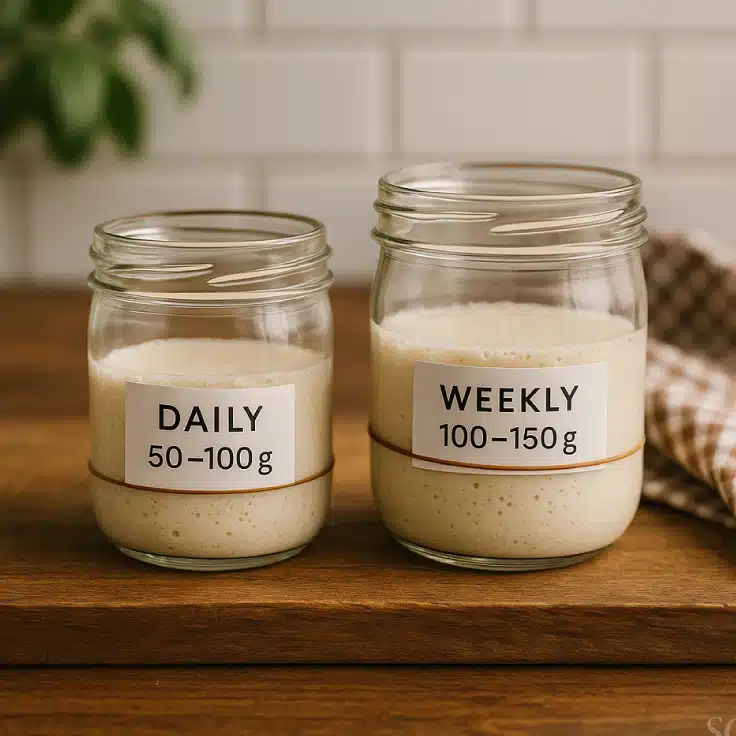
- Daily bakers: Keep 50–100g of starter.
- Weekly bakers: Keep 100–150g of starter.
- Beginners: Start small with 30–50g until you find your rhythm.
- Always feed with equal parts flour and water by weight.
- Freeze or bake with extra discard to avoid waste.
Once you understand how much sourdough discard to keep, your whole baking routine becomes easier — fewer feedings, less waste, and a happier starter. The key is consistency and listening to what your starter needs instead of forcing a schedule that doesn’t fit your kitchen.
If you’re curious about how temperature also affects how fast your starter grows and how much discard you’ll produce, take a look at [What Temperature to Keep Sourdough Discard] (Coming Soon).
What Happens If You Keep Too Much (or Too Little) Discard?
Once you’ve figured out roughly how much sourdough discard to keep, the next step is learning how to read your starter’s behavior. Keeping too much or too little between feedings can completely change how your starter smells, looks, and performs.
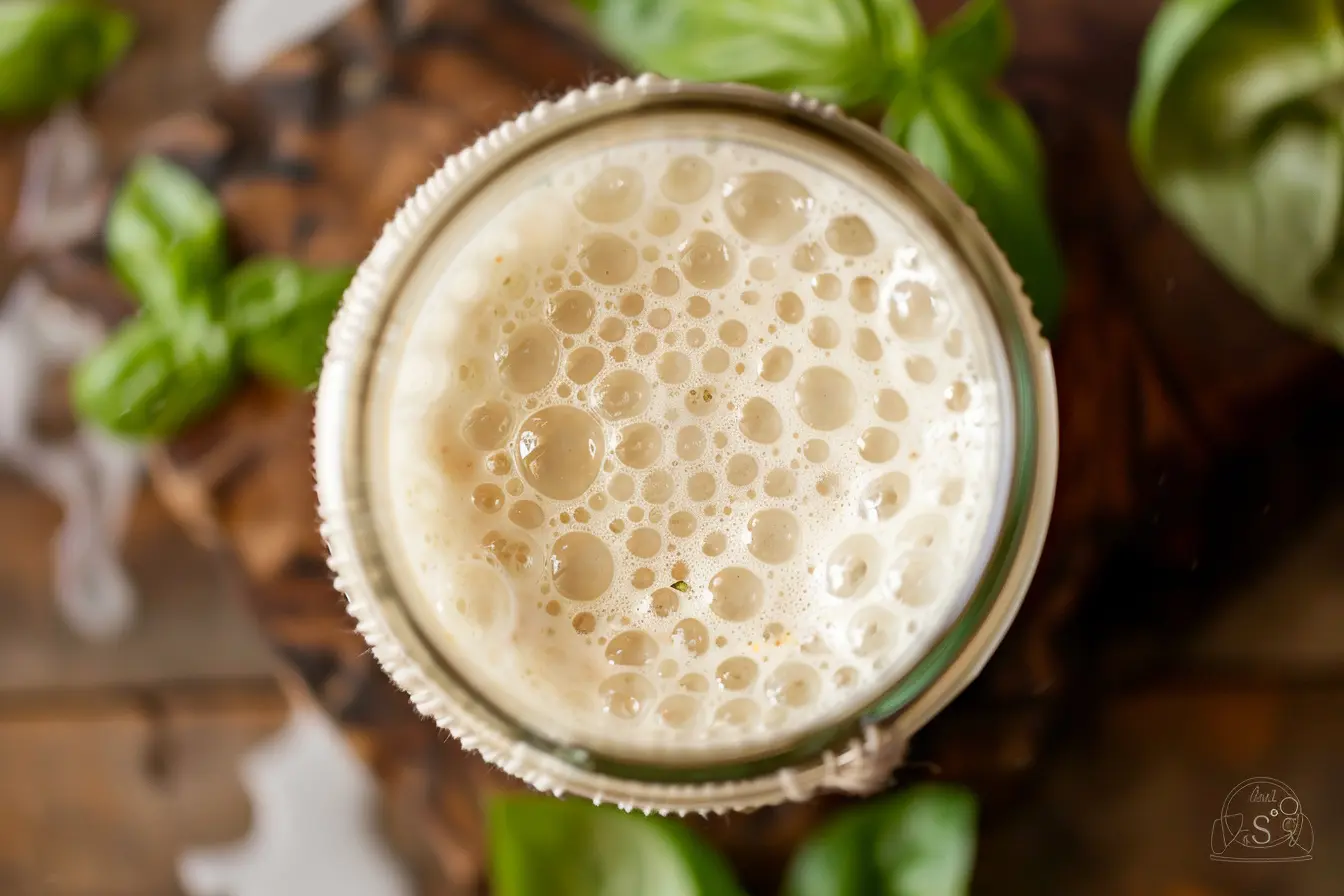
It’s like caring for a plant — too much water or too little, and it lets you know. Your starter is no different.
Here’s what happens on both ends of the spectrum, and how to bring it back to balance.
When You’re Keeping Too Much Discard
This is something almost every new baker does (and I definitely did when I started). You think, “Why waste it? I’ll just keep more!” But over time, that extra starter becomes a problem.
When you keep too much old starter before feeding, there’s not enough fresh flour to feed all those hungry microbes. The yeast and bacteria run out of food quickly and start breaking down the leftover sugars, producing excess acids and alcohols.
You’ll know you’re keeping too much discard if you notice:
- A sharp, vinegar-like or nail polish smell (that’s acetic acid and ethanol building up).
- A flat, sluggish starter that barely rises after feeding.
- A grayish or brown liquid (hooch) collecting on top after just a day or two.
- A texture that feels heavy, sticky, or gluey instead of light and bubbly.
It’s not ruined — it’s just exhausted. The best fix is to reduce your starter size and give it a good feeding with equal parts flour and water.
Scoop out all but a spoonful (about 20–25 grams), then feed it 25g flour and 25g water. Let it sit at room temperature for several hours. You’ll usually see life return quickly — bubbles, lift, and that clean, tangy scent that means your starter is happy again.
If it still smells overly acidic or seems weak after a couple of feedings, check out How to Refresh Old Sourdough Discard — it walks you through exactly how to revive a tired starter step-by-step.
For a great scientific explanation of why discard gets too acidic, see Cultures for Health – Balancing Sourdough Acidity.
When You’re Keeping Too Little Discard
The opposite problem — keeping too little — can be just as frustrating. If you’ve ever noticed that your starter doubles in size super fast but then collapses within a few hours, this might be why.
When you discard too much and don’t leave enough starter behind before feeding, the yeast population starts small. That means it takes longer for the culture to build momentum after feeding, and it can’t hold its rise for long.
You’ll know you’re keeping too little if you notice:
- A starter that rises quickly but falls before you can use it.
- A floury or under-fermented smell (it smells like wet dough, not sourdough).
- A thin, watery texture even after a full feeding cycle.
The fix here is simple: keep a little more next time. Try leaving about 50 grams of starter before feeding if you’re baking weekly, or 100 grams if you bake several times a week.
That small change makes a big difference — your starter will hold its shape longer, rise more predictably, and give your dough that steady energy you’re looking for.
If your starter’s temperature swings a lot throughout the week (especially in warm kitchens), it can also affect how much you should keep. Learn more about that in [What Temperature to Keep Sourdough Discard] (Coming Soon).
How to Find the Right Balance
Think of your discard like a living rhythm: it needs consistency, not perfection. Once you start paying attention to how your starter smells, looks, and reacts, you’ll naturally adjust to the right amount.
Here’s the balance you’re aiming for:
- Your starter doubles in 4–8 hours after feeding.
- It smells clean, tangy, or slightly fruity — not harsh or chemical.
- The texture feels light and aerated, not gummy or soupy.
When you see those signs, you’ve found your sweet spot — the perfect balance between keeping enough starter to stay active and discarding enough to stay healthy.
And if you ever go too far in either direction, don’t stress. It happens to everyone. Sourdough is forgiving — all it takes is a few good feedings to bring it back in line.
For visual references on healthy vs. unbalanced starters, check out [Troubleshooting Discard: Mold & Hooch Guide] (Coming Soon). It includes pictures and real examples so you know exactly what’s normal and what’s not.
A Note from My Own Kitchen
I used to think throwing away starter was a kind of failure — like I wasn’t managing it “right.” But once I understood that discard is part of keeping my starter alive, everything changed.
Now, I don’t think of it as waste. It’s part of the rhythm. Every time I remove a bit and feed what’s left, I’m helping it reset — making room for it to grow stronger.
And that’s really what sourdough is about: rhythm, renewal, and balance.
For more on managing this balance over time, continue to [How to Store Sourdough Discard] (Coming Soon). It covers how to refrigerate, freeze, or even dehydrate your discard without ever wasting a thing.
How to Know When to Discard and When to Keep (Your Easy Routine)
Once you’ve figured out how much sourdough discard to keep, the next question is when. How do you know when it’s time to throw some out — and when to hang onto it?
The answer is simpler than you might think. Your starter and discard both follow a natural rhythm, and once you learn to read the signs, you won’t need a timer or schedule to tell you what to do.
1. If It’s Hungry, It’s Time to Feed — Which Means Discard First
Your starter is like a living pet — it gives clear signals when it’s hungry. If it’s flat, sluggish, or smells sharply acidic (like vinegar or alcohol), it’s time for a feeding.
Before adding new flour and water, you’ll always discard a portion first. Why? Because it keeps the microbial balance healthy and prevents over-acidification. If you skip this step, your starter will slow down and develop too much sourness.
So, if your starter:
- hasn’t doubled in 8–12 hours,
- smells overly sour or “off,” or
- looks heavy or runny,
it’s time to discard about half (or more) and feed what’s left.
If you’re not sure what a “healthy” starter should look or smell like, take a peek at [Troubleshooting Discard: Mold & Hooch Guide] (Coming Soon). It includes pictures and easy tests to help you spot the difference between normal and unhealthy starters.
2. If It’s Active and Bubbly — Keep It and Use It
When your starter is happy, it’ll tell you: it smells pleasantly yeasty, looks full of bubbles, and doubles in size within 4–6 hours of feeding. That’s when you keep it — not discard it.
This is the best time to use it in recipes that call for an “active starter,” like bread, focaccia, or cinnamon rolls. At this stage, your starter is at peak strength — full of wild yeast and balanced bacteria that will lift your dough beautifully.
If you’re not baking that day, you can store it instead. Learn how to do that safely in [How to Store Sourdough Discard] (Coming Soon) — it covers refrigeration, freezing, and even dehydrating methods for long-term storage.
3. If You’re Feeding Daily — Discard Before Every Feeding
If you’re maintaining your starter at room temperature and feeding daily, you’ll need to discard before every feeding. This keeps your culture strong and prevents it from outgrowing your jar.
Here’s an easy rhythm:
- Stir your starter.
- Discard down to about one tablespoon (20–25g).
- Feed it equal parts flour and water by weight.
- Let it sit out until doubled, then use or store.
That’s it. No fancy math, no stress.
For a full visual walkthrough of this process, see [Sourdough Discard Feeding Schedule] (Coming Soon). It shows how to adjust timing based on temperature and your baking habits.
4. If You Feed Weekly — Discard Before Refreshing
If you’re a weekend baker and keep your starter in the fridge most of the time, you’ll discard right before “refresh day.”
Take your starter out of the fridge, let it come to room temperature, and pour off any hooch (the grayish liquid that forms on top). Then discard about half, feed the rest, and let it bubble back to life. Once it’s doubled, you can either bake or refrigerate it again.
If it takes more than 8–10 hours to show signs of life, it might need a couple of feedings to rebuild strength. Follow the steps in How to Refresh Old Sourdough Discard for a gentle recovery plan.
5. Trust Your Senses — Not the Clock
No matter how many schedules or ratios you read about, the best indicator of when to keep or discard is your senses.
A healthy starter smells tangy, not rotten. It feels light and bubbly, not sticky or watery. It should double reliably after each feeding — not just sometimes.
If your gut says something feels off, it probably is. That’s your cue to discard, clean your jar, and start fresh.
External reference: King Arthur Baking – How to Maintain a Sourdough Starter has a great visual guide to help you understand what healthy fermentation looks like day by day.
In a Simple Rule of Thumb
- Discard when your starter smells harsh, looks sluggish, or hasn’t doubled.
- Keep when it’s bubbly, smells pleasantly tangy, and feels active.
- Always discard before feeding, unless you’re about to bake.
- Store discard safely if you’re saving it for recipes later.
That’s the rhythm of sourdough — feed, discard, grow, repeat. Once you get used to the pattern, it stops feeling like a guessing game and starts feeling natural.
For a deeper dive into discard care and recipe ideas, circle back to your foundation:
Sourdough Discard 101 – The Ultimate No-Waste Guide.
And if you’re ready to get creative, explore the Sourdough Discard Recipe Collection — where nothing goes to waste and everything smells like home.
Key Takeaways & Final Thoughts
When I first started my sourdough journey, the idea of “throwing some away” made me cringe. I’d spent days growing that starter, watching it bubble to life — why on earth would I get rid of part of it? But over time, I learned something that completely changed how I saw it: discarding isn’t waste. It’s maintenance. It’s how you keep your starter happy and alive.
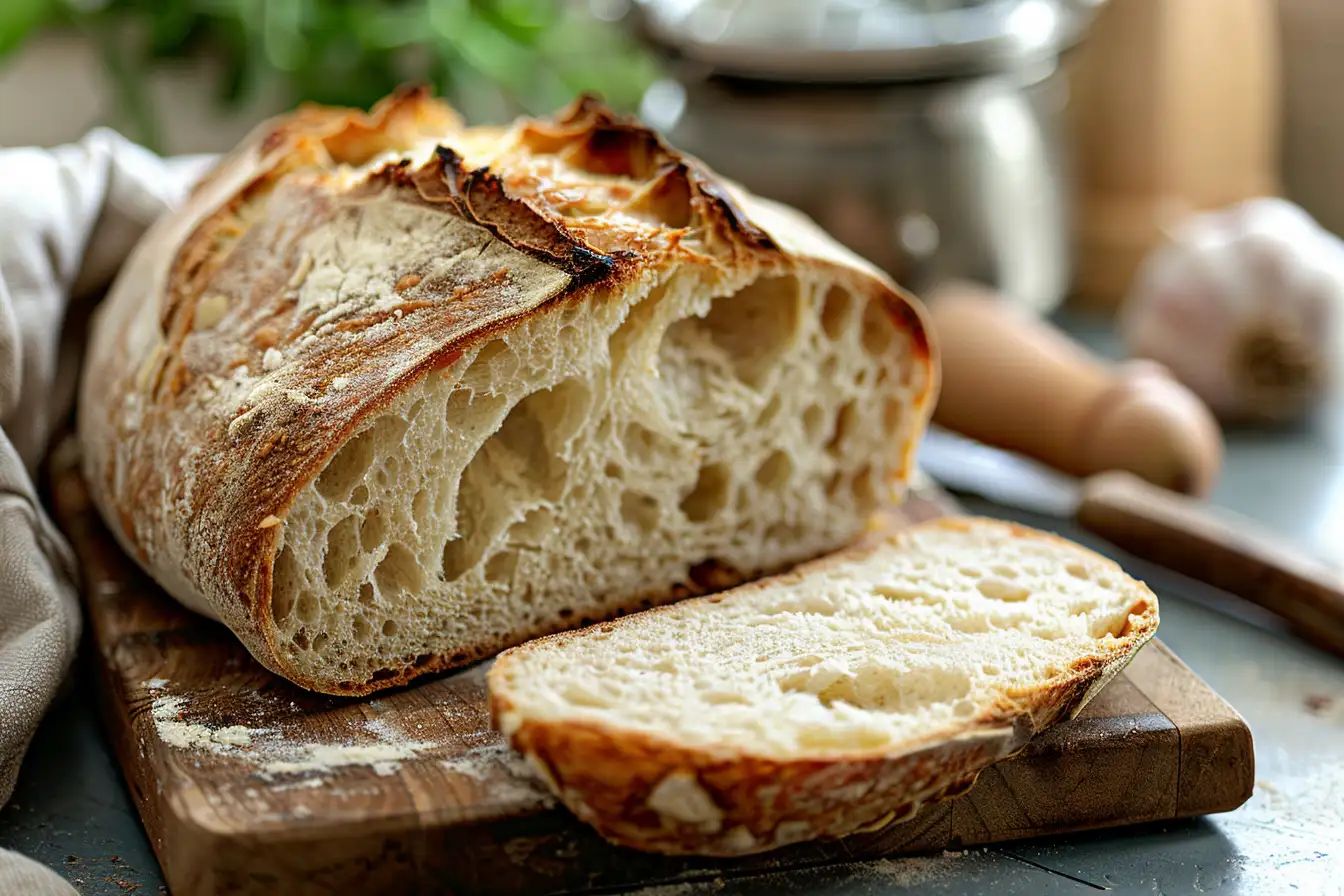
Once you understand how much sourdough discard to keep, everything about caring for your starter gets easier. You stop second-guessing yourself. You stop feeling guilty. You start to see that the discard step is part of the process — not something to fight against.
Each time you remove a bit, you’re giving your starter a fresh start. You’re creating room for new, active yeast to grow. Without that space, it slows down, gets overly acidic, and loses its spark. So when you scoop a little out before feeding, think of it as cleaning the air — a small reset that helps your starter breathe again.
If you bake often, a smaller starter is all you need — something manageable, like 50 to 100 grams. If you bake once a week, you’ll keep a little more. There’s no universal rule here. Your starter should fit your life, not the other way around.
And when things don’t look perfect — when it smells too sour, rises too slowly, or develops a thin layer of hooch — that’s not failure. That’s feedback. Your starter’s just asking for a little attention. A good feeding or two will bring it back to center.
Here’s what I’ve learned after years of baking: sourdough isn’t demanding. It doesn’t need you to follow every rule to the letter. It just needs you to show up — to feed it when it’s hungry, to give it time to rest, and to trust that it knows how to bounce back.
If you ever need a little extra help or inspiration:
- Bring tired discard back to life with How to Refresh Old Sourdough Discard.
- Learn how to store it safely in [How to Store Sourdough Discard] (Coming Soon).
- Use every last bit with recipes from the Sourdough Discard Recipe Collection.
And if you want to revisit the basics — how discard works, why it matters, and how to build your own no-waste rhythm — go back to your foundation:
Sourdough Discard 101 – The Ultimate No-Waste Guide.
Because at its heart, sourdough isn’t about strict schedules or perfect starters. It’s about patience, rhythm, and trust. Every feeding, every discard, every loaf teaches you something new.
So keep what you need, let go of the rest, and feed what’s left with care. That’s all sourdough really asks of you — and that’s more than enough.


